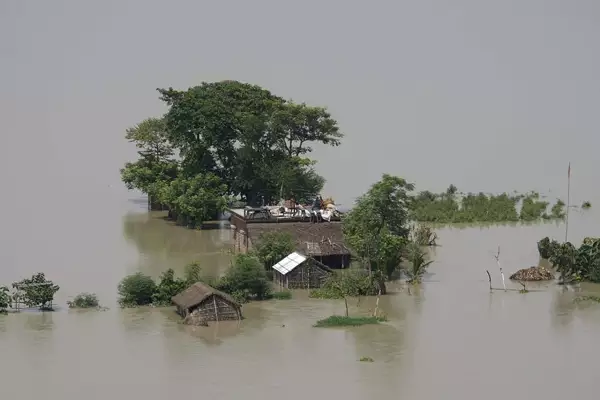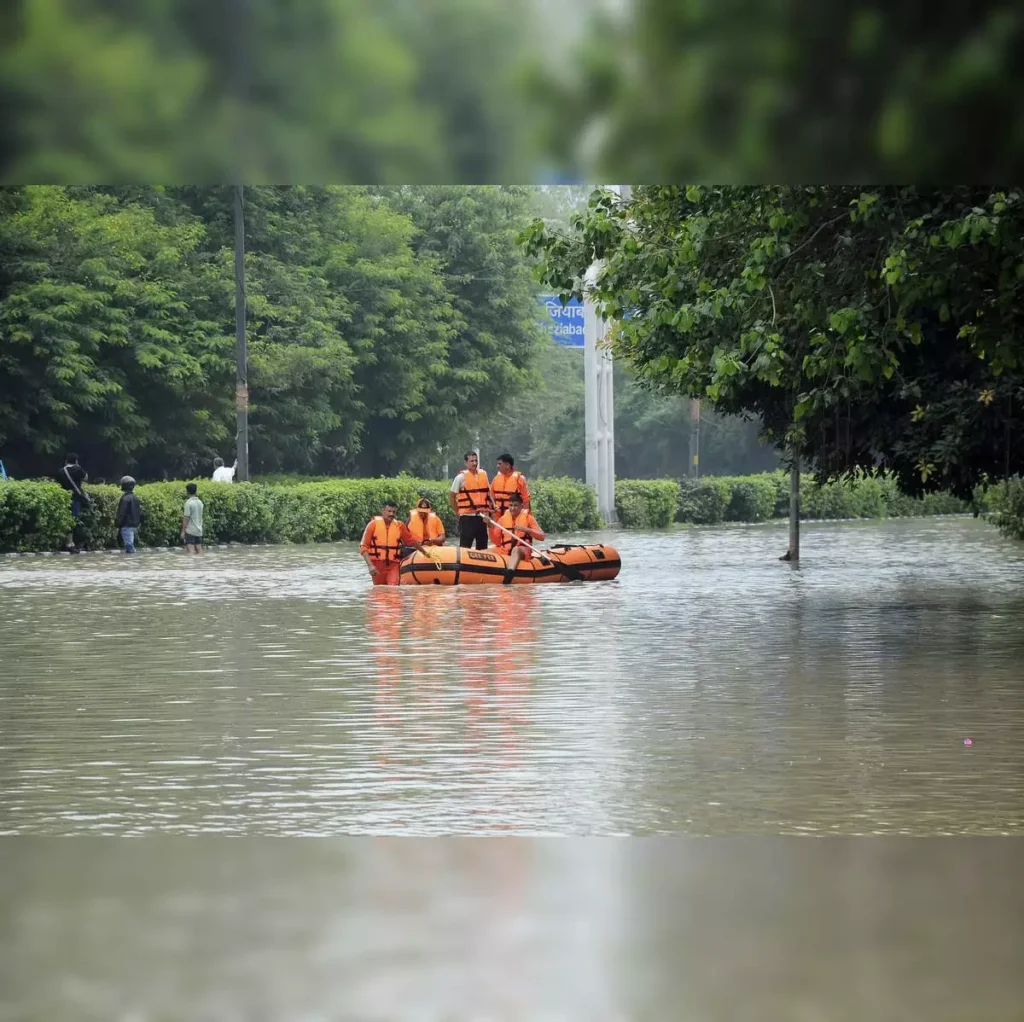The tragic accident at an IAS coaching centre in New Delhi, where urban flooding led to the death of three IAS aspirants.
- A committee chaired by the Union Home Minister approved six proposals from Telangana, Gujarat, Karnataka, West Bengal and Maharashtra regarding urban flooding management.
What is Urban Flooding?
- Urban flooding refers to the rapid inundation of water in urban areas.
- This situation arises due to a combination of heavy rainfall and inadequate drainage systems.
- Urban local bodies and state governments are primarily responsible for managing these crises through the maintenance of sewerage and drainage infrastructures.
What are the primary causes of Urban Flooding?
Meteorological Factors:
- These include extreme rainfall events, such as the record 944 mm of rain within 24 hours during the 2005 Mumbai floods, and cyclonic storms, which were a major cause of the Hyderabad floods in 2020.
- Climate change also contributes to increased snowmelt and rising sea levels.
Hydrological Factors:
- Alterations in river paths, soil erosion, and landslides that block drainage paths are significant hydrological contributors to urban flooding.
Human Factors:
- The rapid expansion of urban areas, deforestation, inadequate infrastructure maintenance, and unplanned releases from reservoirs significantly exacerbate the risk and impact of urban floods.
Impacts and Consequences of Urban Flooding:
The impacts of urban floods are far-reaching, affecting everything from public health to economic stability:
- Structural Damage: Flooding can cause severe damage to buildings and infrastructure, leading to costly repairs and reconstruction.
- Public Health Risks: Stagnant water pools become breeding grounds for mosquitoes, increasing the risk of vector-borne diseases such asdengue, malaria, and chikungunya.
- Economic Disruption: Floods disrupt transportation systems and power supplies, leading to significant economic losses and affecting daily operations of urban life.
Prevention Strategies for Mitigating Urban Floods
To combat the challenges of urban flooding, various preventive measures and systems have been implemented at both the national and local levels:
- State Initiatives: Tools like Chennai’s Flood Warning System and Kolkata’s flood forecasting and early warning system are pivotal in managing floods.
- National Initiatives: The Ministry of Urban Development’s AMRUT Mission aims to enhance stormwater drainage, while the National Disaster Management Authority (NDMA) focuses on hazard risk zoning and the establishment of an Urban Flood Disaster Management Information System.
Recommendations for Urban Flood Management
- Regulatory Enforcement: It is crucial to enforce regulations that prevent the misuse of basements for living spaces or offices, restricting them to safer uses like parking and utility spaces.
- Flood-Resilient Building Design: New constructions should incorporate designs that prevent water entry, including the use of flood-barrier gates and water-resistant building materials.
- Specialized Infrastructure: Implementing advanced pumping systems and improving drainage infrastructure are essential in regions prone to heavy rainfall and inadequate natural drainage.
Ref: Source
| UPSC IAS Preparation Resources | |
| Current Affairs Analysis | Topperspedia |
| GS Shots | Simply Explained |
| Daily Flash Cards | Daily Quiz |
Frequently Asked Question:
What is Urban Flooding?
Urban flooding in India refers to the overflow of water in urban areas primarily due to intense rainfall and inadequate drainage infrastructure.
What are the Causes of Urban Flooding?
The causes of urban flooding include excessive rainfall, poor drainage systems, rapid urbanization, and geographical changes such as soil erosion and river course alterations.
What are the Major Urban Floods in India?
Major urban floods include the 2005 Mumbai floods, the 2020 Hyderabad floods, and the 2015 Chennai floods, all exacerbated by extreme weather events and infrastructural failures.
What are the Impacts of Urban Floods?
The impacts of urban floods range from structural damage and economic losses to public health crises, including the spread of waterborne diseases.
What are Mitigation Strategies for Urban Floods?
Mitigation strategies for urban floods involve improving drainage systems, enforcing urban planning regulations, installing early warning systems, and designing flood-resilient infrastructure.



